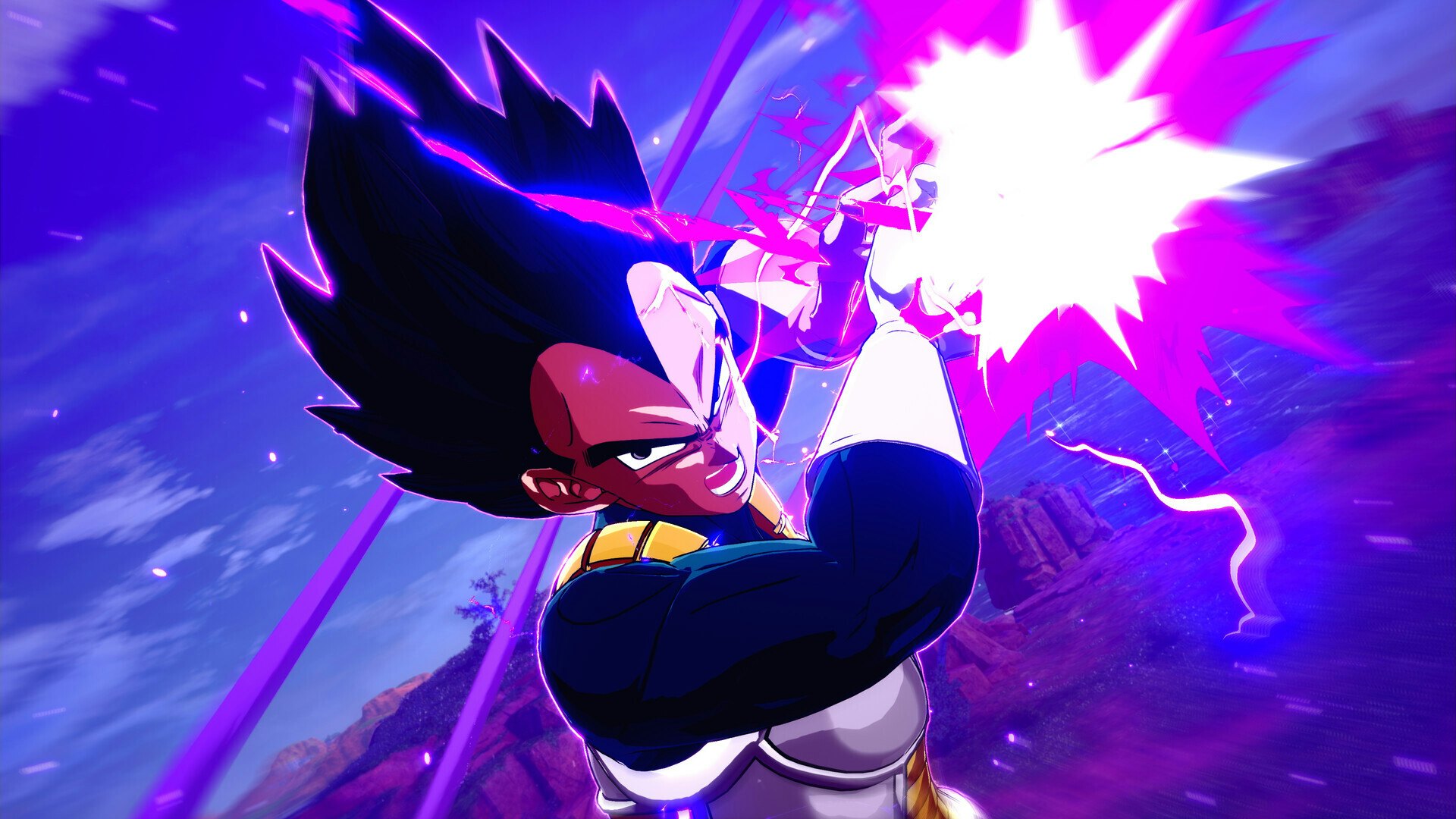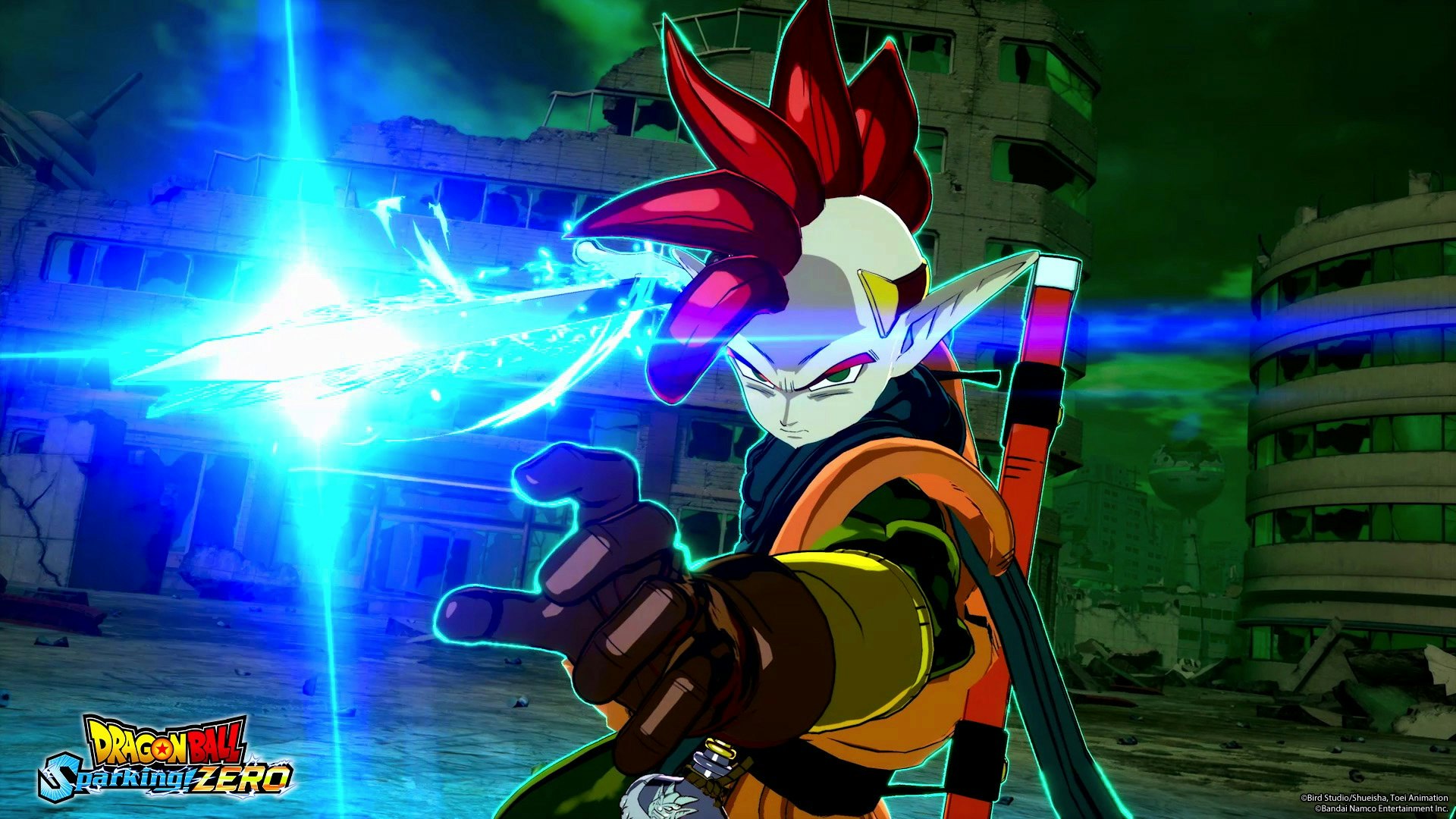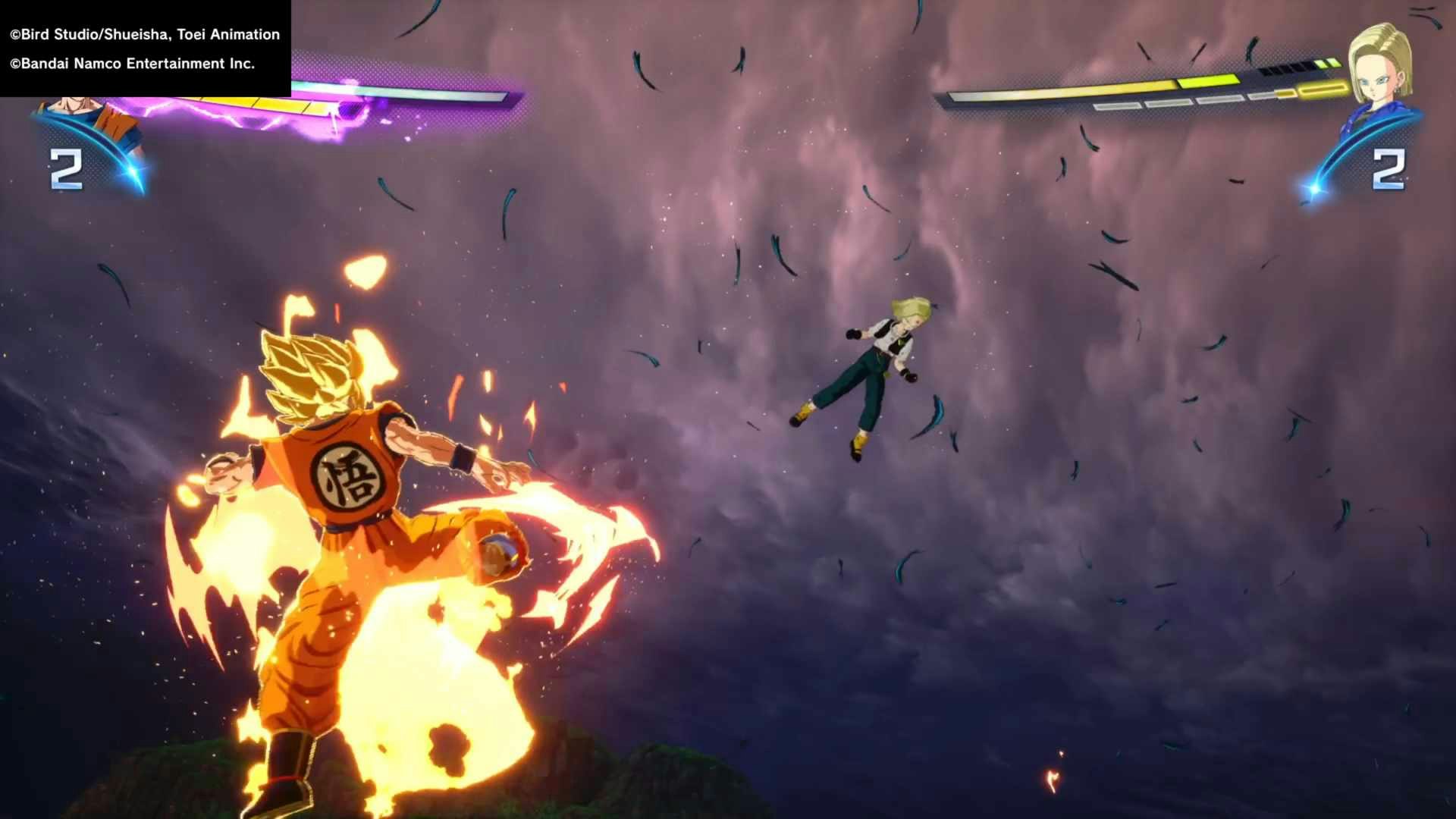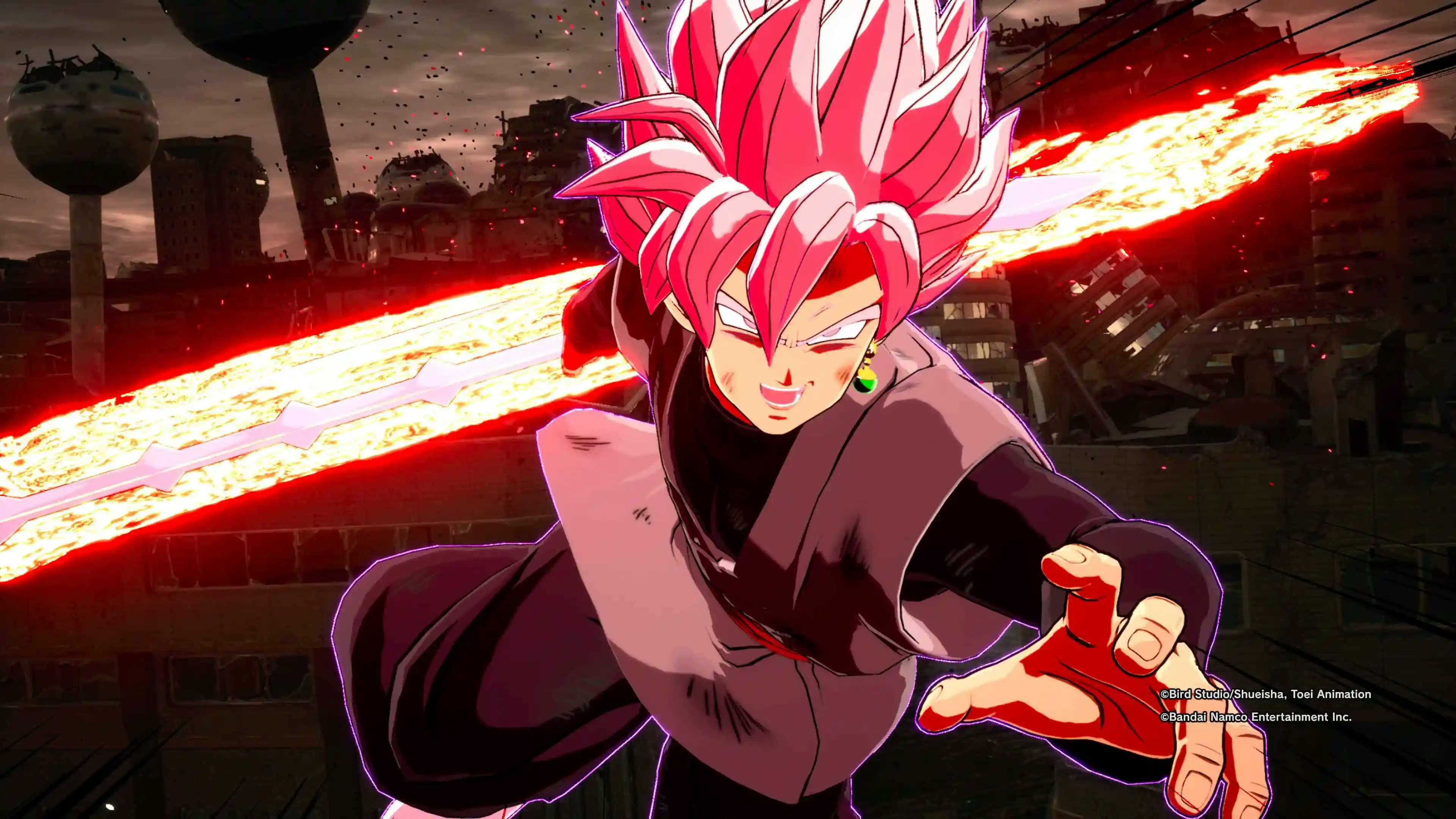
There were stars in my eyes as Goku unleashed the most ridiculous explosion I’ve ever seen in a video game, turning the entire stage into a smoking husk of lava, and Frieza right along with it. Suddenly I felt like I was ten years old again, glued to my TV for the latest nail-biting episode of Dragon Ball Z.
Dragon Ball: Sparking Zero is an indulgent over-the-top celebration of one of the most prolific entertainment series of all time, immersing players in the action and destruction of super-powered battles. It’s nothing short of a joy for any fan of Dragon Ball, but there’s a surprisingly deep fighting game hidden underneath that shiny coat of paint — even if it stumbles a bit in providing a varied gameplay experiences. It’s simply one of the best Dragon Ball games, and even one of the best anime games ever made.
Powering Up

Sparking Zero is technically a sequel to the Budokai Tenkaichi series of games, which is only the name in the West - in Japan each game in the series has the subtitle “Sparking.” Largely released on the PlayStation 2, the Budokai games are largely considered the best Dragon Ball games, and were pivotally defining for the anime arena fighter genre in general. Sparking Zero carries on that legacy by giving players an absurdly massive roster of characters spanning the decades of Dragon Ball.
Seriously. I’m talking over 180 characters, although at least 20 of those are different variations of Goku. But the roster does a great job of representing the history of the franchise, drawing from all the eras of Dragon Ball Z, GT, Super, and even the myriad of films released. If you have a favorite character, they’re likely featured here in some way.

The most important thing about Sparking Zero is how it completely understands what makes Dragon Ball special: the spectacle and underlying emotion. This is a game that wants to make your fights feel just as epic as the anime, and the visual presentation of the game does that astoundingly well.
For one, it needs to be said that Sparking Zero is a jaw-droppingly gorgeous game. Characters and attacks are rendered with absurd amounts of detail drawn right from the anime, even down to someone being blown away bit by bit in a Kamehameha move. Special attacks are constantly dazzling affairs that feature over-the-top animations that quite literally break the stage or world, and you can practically feel the destruction through the audio.
Finding the Spark

What’s really impressive about Sparking Zero, however, is that this spectacle is genuinely backed up by a rock-solid combat system. It’s extremely easy to pick up Sparking Zero and get into matches, but the more you dig the more you realize this system has serious depth. If you’ve played any kind of arena fighter you’ll instantly be familiar with the format of Sparking Zero, it’s a 3D fighter where two players can fully move around an arena and have a wide array of attacks to take down the other. You have a basic melee attack that you can use for combos and then options for dodging, guarding, teleporting behind the enemy, dashing, and more. On top of that you have a Ki gauge that you can charge by holding down the right trigger, to gain enough bars of Ki to use your special skills. Charging a full Ki gauge will let you enter Sparking mode, boost your damage and combos, and let you use an Ultimate attack.
Those are the basics, but Sparking Zero layers in some new ideas and changes to provide players with even more options. A skill gauge constantly rises through battle letting you use unique skills to boost your character’s parameters or special abilities like Solar Flare, to briefly stun enemies. Then there are more complex mechanics; Super Perception is a counter move that lets you anticipate enemy attacks and then launch your own. Vanishing Assaults let you juke an enemy by disappearing suddenly right before an attack.

It’s a lot to take in and learn, and you’ll likely need to spend a few hours coming to grips with the various systems and mechanics. Sparking Zero does have a lengthy tutorial, but it basically really just tells you the button commands but doesn’t explain how all these mechanics flow together in battle.
No matter. Sparking Zero is a blast to play. Controls feel tight and responsive, and battles play out at a lightning-fast pace with zero slowdown, even in the most hectic attacks and explosions. The complexity of the game’s core fighting is only bolstered by the massive roster, with most characters having their own unique little quirks or strengths. For example, Mr. Satan can’t fly so instead he does a massive jump and then slowly falls down to the ground. Learning a wide array of characters and finding your favorites is another party of the experience, and it’s equally fun to see everyone’s Ultimate attacks.
Variety Is the Spice of Life

Sparking Zero has a lot of content to wade through, but not all of it is implemented incredibly well. Apart from battles, the main modes you’ll be playing are Episode Battle and Custom Battle. Episode Battle lets you play through the iconic events of Dragon Ball, all the way from the Saiyan Saga through the Universe Survival Saga. There are eight different characters to play who explore different parts of the series, including Goku, Frieza, Jiren, Piccolo, Future Trunks, and more.
Episodes largely follow the story of the anime, but at certain points have pivotal branches that can lead to entirely new stories or results. For example, in one of Piccolo's branches he and Gohan team up to defeat Cell, changing the outcome from the anime.
It’s a neat idea that definitely has some fun moments, but the implementation leaves a lot to be desired. To find these branches you’ll often have to meet specific requirements that the game does nothing to tell you, like reducing an opponent’s health in a certain amount of time. This means that you’ll be playing missions over and over to try and figure out how to make that branch happen.
On top of this, the Episode Battle missions can be remarkably difficult, oftentimes pitting you with a single character against five different enemies in a row. You can lower the difficulty, but in general, it feels like that difficulty is all over the place, with massive spikes that appear out of nowhere. Strangely, different characters’ episodes also repeat the same battles quite often, meaning you’ll need to go through content you’ve already done in order to get to new stuff. In general, it’s a mode that just feels underbaked.

Custom Battle, on the other hand, lets you play through a variety of pre-made missions that pit unique characters against each other or have unique parameters. What’s really interesting, is that you can create your own battles and share them with other players. It’s basically a Mario Maker for Dragon Ball battles that lets you choose the characters, place text for the story, and set all the options. It’s easy to see how this mode could have longevity through the player-created aspect, and it’s already hilarious to see some of what’s been made, like pitting the diminutive Gotenks against five of the most powerful fighters in the universe.
Apart from these two main modes and multiplayer there’s plenty else to keep you occupied, like unlockable costumes and voices; a gallery where Chi-Chi, Bulma, and Pan comment on every character; and Tournament modes for competitions. Sparking Zero is a dense game that can easily keep you occupied for dozens of hours.
Breaking the Limits

Dragon Ball: Sparking Zero feels like it breaks the curse of anime arena fighters, finally giving players a complex fighter with real depth that’s simultaneously a gorgeous celebration of a seminal series. It’s a game that absolutely revels in its massive rosters and the absurdity of Dragon Ball, embracing both every step of the way.
While it has some issues with mode variety and how things are implemented, Sparking Zero is a deliriously good time that makes it almost impossible to not have a massive smile on your face while playing.
8/10
Dragon Ball: Sparking Zero launches on October 11 for PS5, Xbox Series X|S, and PC. Inverse reviewed the PS5 version.
INVERSE VIDEO GAME REVIEW ETHOS: Every Inverse video game review answers two questions: Is this game worth your time? Are you getting what you pay for? We have no tolerance for endless fetch quests, clunky mechanics, or bugs that dilute the experience. We care deeply about a game’s design, world-building, character arcs, and storytelling come together. Inverse will never punch down, but we aren’t afraid to punch up. We love magic and science-fiction in equal measure, and as much as we love experiencing rich stories and worlds through games, we won’t ignore the real-world context in which those games are made.







